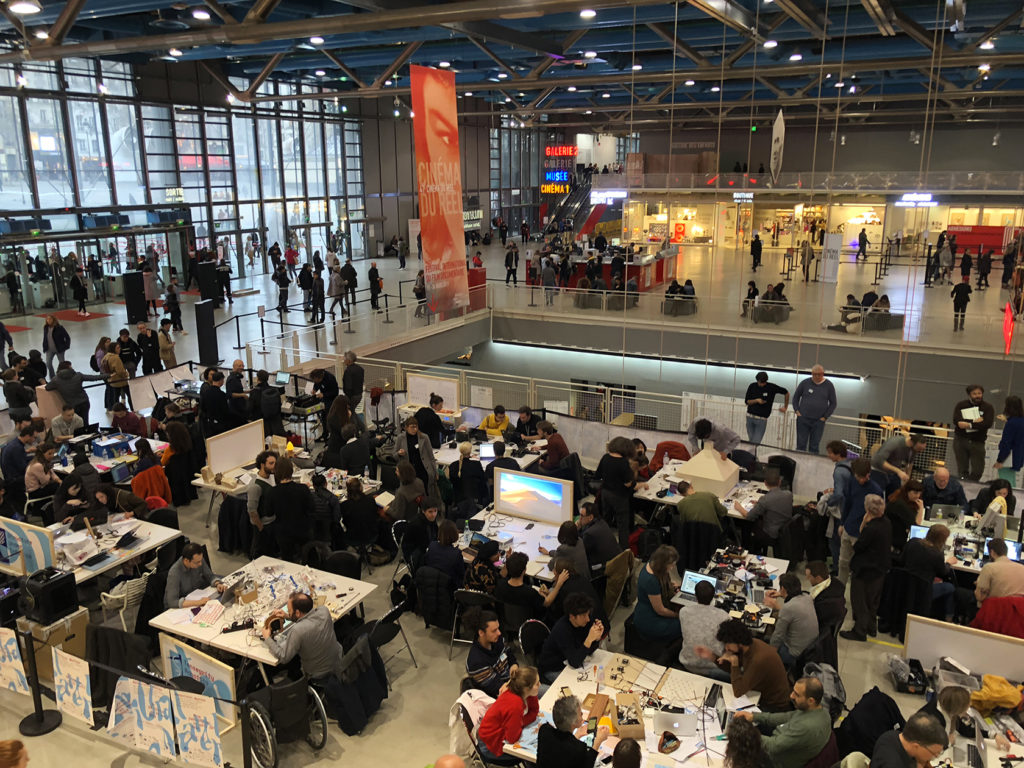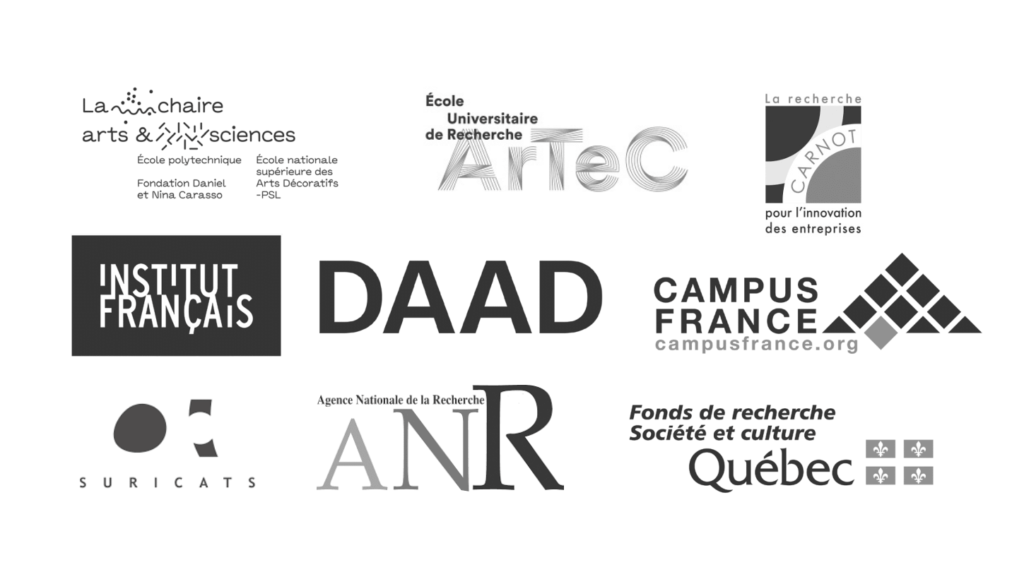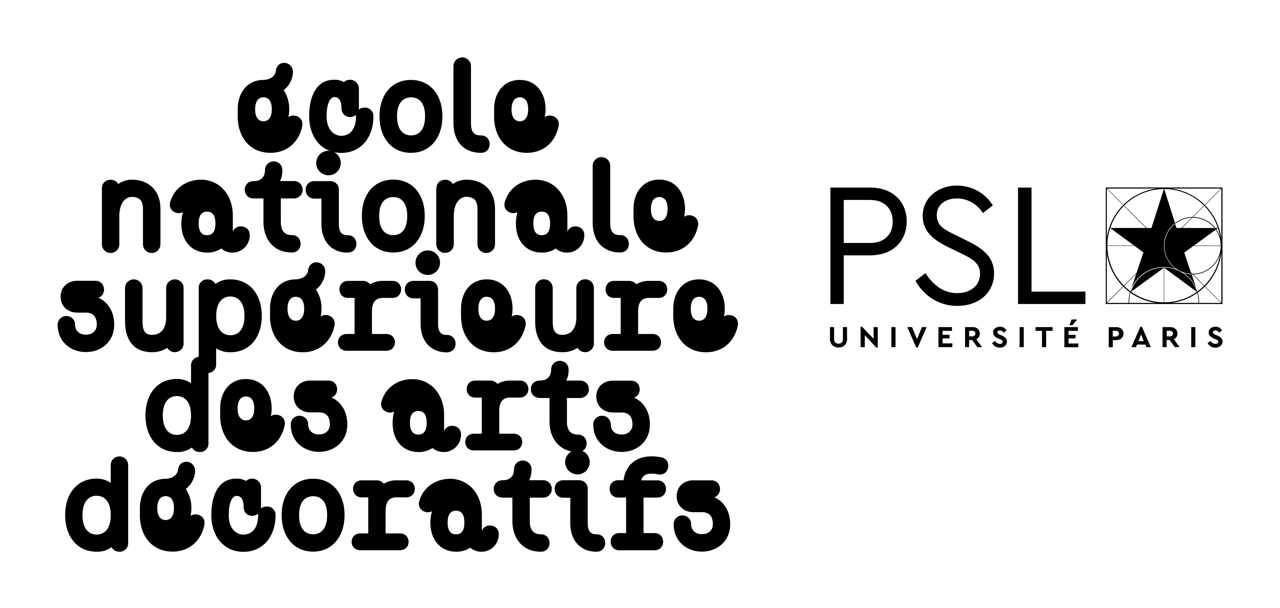Reflective Interaction is an art and design research group of EnsadLab focusing on interactive “dispositifs”. The Reflective Interaction group addresses the following questions: why and how might we design, produce and explore artistic interactive dispositifs that articulate the aesthetic, symbolic and operative dimensions, to engender experiences that are both sensitive and reflective? How might we question our interdependence with human and non-human environments and explore prospective sociotechnical possibilities? What might we learn from group interactions and robotic devices interacting/interfacing with new active, reactive, and living matter?

The notion of “dispositif” is increasingly resonant in contemporary art and design. “Dispositif” is usually translated as “device” or “apparatus”. However, neither one of these English terms captures the specificity of the French word, which designates the diverse material, human and/or linguistic elements configured to condition an activity. At the intersection of artistic, technological, and societal issues, all dispositifs include an actual or potential operative dimension.
This dimension is all the more concrete as it involves creating with interactive dispositifs that respond to the environment in which they are situated. At EnsadLab, the Reflective Interation research group explores the operational relationships that occur between these creations and their natural and artificial context, usually involving humans. As they elicit engaging and reflective experiences, these works question the interdependences that actively shape our shared environments.
Research-creation, pluridisciplinarity and publicization
Closely linking “Research and Creation”, the researchers of the Reflective Interaction group develop future dispositifs that are connected to artistic, technoscientific, societal and/or environmental issues. Although art and design are the foundational disciplines, given the complexity of the topics investigated, our research usually requires collaboration with other fields, such as the humanities and social sciences, the natural sciences and engineering.
Together, through practice, we experiment, question and develop contemporary and emerging ways of representation and action: first and foremost, ways of representing that are derived from interactive technologies, but also from other, broader forms of interactions. Our relationship to technologies, and ultimately to technique, is neither subordinate nor compliant. We go beyond the use of simple tools for specific ends, to use them in an exploratory approaches in line with those of Gilbert Simondon or Jack Burnham.
The collective investigation of the dispositifs entails research about their scripts, layouts and technicalities, as well as the situations they generate and their societal and environmental impacts. Although this approach meets methods of academic research, we experiment in an iterative way, rather than follow a linear dynamic, in a constant dialogue between individual and collective experiments and implementations, negotiating across the generic and specific, the collective and singular, and across deductive, inductive and abductive approaches. The researchers of the Reflective Interactions group closely articulate research methodology and creative project, “Research and Creation”: “R&C”.
The creations produced are based on generic dispositifs and issues that can be easily shared, studied, theorized and transferred.
In order to document and disseminate this research, we make it public in many ways: exhibitions, public experiments, performances, workshops, conferences, public debates, posters and poster sessions, text, image, multimedia and multi-format content publishing. When our work requires the development of new instruments (software as well as hardware), we consider transferring them for public use (free licence) or industrial use (patent, etc.). We understand these methods of publication, as methods of “publicization” — since publishing consists, primarily, of making public.
Axes
The Reflective Interaction research group is organized around four axes, four autonomous themes that regular collaborations at the intersection of different fields focus on.
• Behavioral Objects
• Cooperationnal Mobility
• Responsive Matter
• Experimental Publicization
Keywords
Interactivity, interaction, “dispositif”/device, system, environment, instrument, operation and cooperation, interdependancy, mobility, robotics, active and responsive matter, light, artificial intelligence v. natural intelligence, multimedia and transmedia, data visualisation, data materialisation, data physicalisation, publicization
Support

EnsadLab’s Reflective Interaction Group is supported by: La Chaire arts et sciences de l’Ecole polytechnique, de l’Ecole nationale supérieure des Arts Décoratifs – PSL et de la Fondation Daniel et Nina Carasso – ArTec: Ecole universitaire de recherche “Arts, Technologies, Numérique, Médiations humaines et Création” – Institut Carnot Cognition – Institut français – DAAD, Deutscher Akademischer Austauschdienst (Office allemand d’échanges universitaires, programme Perspektive) – Campus France (Programme Procope) – Suricats Consulting – Agence nationale de la recherche – Fonds de recherche du Québec
Partners
EnsadLab’s Reflective Interaction Group currently work or has worked in partnership with: The Cluster Matters of Activity, Humboldt University, Berlin, Germany – Le Centre Georges Pompidou, Paris – L’Ircam (Institut de Recherche et Coordination Acoustique/Musique), Paris – Art Book Magazine, Paris – Concordia University, Montréal, Canada – Universidade da Coruña, Spain – Le laboratoire CHArt (Cognitions humaine & Artificielle), EPHE, Paris
